Quantitative proteomics identify Tenascin-C as a promoter of lung cancer progression and contributor to a signature prognostic of patient survival
- PMID: 28652369
- PMCID: PMC5514763
- DOI: 10.1073/pnas.1707054114
Quantitative proteomics identify Tenascin-C as a promoter of lung cancer progression and contributor to a signature prognostic of patient survival
Abstract
The extracellular microenvironment is an integral component of normal and diseased tissues that is poorly understood owing to its complexity. To investigate the contribution of the microenvironment to lung fibrosis and adenocarcinoma progression, two pathologies characterized by excessive stromal expansion, we used mouse models to characterize the extracellular matrix (ECM) composition of normal lung, fibrotic lung, lung tumors, and metastases. Using quantitative proteomics, we identified and assayed the abundance of 113 ECM proteins, which revealed robust ECM protein signatures unique to fibrosis, primary tumors, or metastases. These analyses indicated significantly increased abundance of several S100 proteins, including Fibronectin and Tenascin-C (Tnc), in primary lung tumors and associated lymph node metastases compared with normal tissue. We further showed that Tnc expression is repressed by the transcription factor Nkx2-1, a well-established suppressor of metastatic progression. We found that increasing the levels of Tnc, via CRISPR-mediated transcriptional activation of the endogenous gene, enhanced the metastatic dissemination of lung adenocarcinoma cells. Interrogation of human cancer gene expression data revealed that high TNC expression correlates with worse prognosis for lung adenocarcinoma, and that a three-gene expression signature comprising TNC, S100A10, and S100A11 is a robust predictor of patient survival independent of age, sex, smoking history, and mutational load. Our findings suggest that the poorly understood ECM composition of the fibrotic and tumor microenvironment is an underexplored source of diagnostic markers and potential therapeutic targets for cancer patients.
Keywords: Tenascin-C; extracellular matrix; lung cancer; quantitative proteomics; tumor microenvironment.
Conflict of interest statement
The authors declare no conflict of interest.
Figures
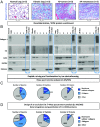
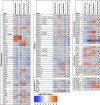

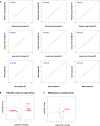
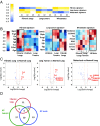

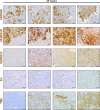
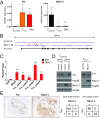
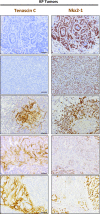
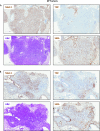
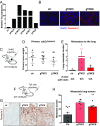
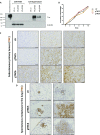
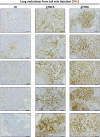


Comment in
-
Tumor microenvironment as a potential source of clinical biomarkers in non-small cell lung cancer: can we use enemy territory at our advantage?J Thorac Dis. 2017 Nov;9(11):4300-4304. doi: 10.21037/jtd.2017.10.66. J Thorac Dis. 2017. PMID: 29268496 Free PMC article. No abstract available.
Similar articles
-
Tenascin C and annexin II expression in the process of pancreatic carcinogenesis.J Pathol. 2006 Apr;208(5):673-85. doi: 10.1002/path.1935. J Pathol. 2006. PMID: 16450333
-
High Co-expression of Large Tenascin C Splice Variants in Stromal Tissue and Annexin A2 in Cancer Cell Membranes is Associated with Poor Prognosis in Pancreatic Cancer.Ann Surg Oncol. 2020 Mar;27(3):924-930. doi: 10.1245/s10434-019-07708-x. Epub 2019 Aug 28. Ann Surg Oncol. 2020. PMID: 31463696
-
Proteomic Profiling of Extracellular Matrix Components from Patient Metastases Identifies Consistently Elevated Proteins for Developing Nanobodies That Target Primary Tumors and Metastases.Cancer Res. 2023 Jun 15;83(12):2052-2065. doi: 10.1158/0008-5472.CAN-22-1532. Cancer Res. 2023. PMID: 37098922 Free PMC article.
-
Tenascin C in metastasis: A view from the invasive front.Cell Adh Migr. 2015;9(1-2):112-24. doi: 10.1080/19336918.2015.1008331. Cell Adh Migr. 2015. PMID: 25738825 Free PMC article. Review.
-
Interaction between cell and extracellular matrix in heart disease: multiple roles of tenascin-C in tissue remodeling.Histol Histopathol. 2004 Apr;19(2):517-25. doi: 10.14670/HH-19.517. Histol Histopathol. 2004. PMID: 15024713 Review.
Cited by
-
Discovery and Evaluation of Protein Biomarkers as a Signature of Wellness in Late-Stage Cancer Patients in Early Phase Clinical Trials.Cancers (Basel). 2021 May 18;13(10):2443. doi: 10.3390/cancers13102443. Cancers (Basel). 2021. PMID: 34069985 Free PMC article.
-
Proteomics, Glycomics, and Glycoproteomics of Matrisome Molecules.Mol Cell Proteomics. 2019 Nov;18(11):2138-2148. doi: 10.1074/mcp.R119.001543. Epub 2019 Aug 30. Mol Cell Proteomics. 2019. PMID: 31471497 Free PMC article. Review.
-
Prognostic Role of Tenascin-C for Cancer Outcome: A Meta-Analysis.Technol Cancer Res Treat. 2019 Jan 1;18:1533033818821106. doi: 10.1177/1533033818821106. Technol Cancer Res Treat. 2019. PMID: 30803361 Free PMC article.
-
Dynamically remodeled hepatic extracellular matrix predicts prognosis of early-stage cirrhosis.Cell Death Dis. 2021 Feb 8;12(2):163. doi: 10.1038/s41419-021-03443-y. Cell Death Dis. 2021. PMID: 33558482 Free PMC article.
-
Integrin Signaling in Cancer: Mechanotransduction, Stemness, Epithelial Plasticity, and Therapeutic Resistance.Cancer Cell. 2019 Mar 18;35(3):347-367. doi: 10.1016/j.ccell.2019.01.007. Cancer Cell. 2019. PMID: 30889378 Free PMC article. Review.
References
Publication types
MeSH terms
Substances
Grants and funding
LinkOut - more resources
Full Text Sources
Other Literature Sources
Medical
Molecular Biology Databases
Research Materials
Miscellaneous

